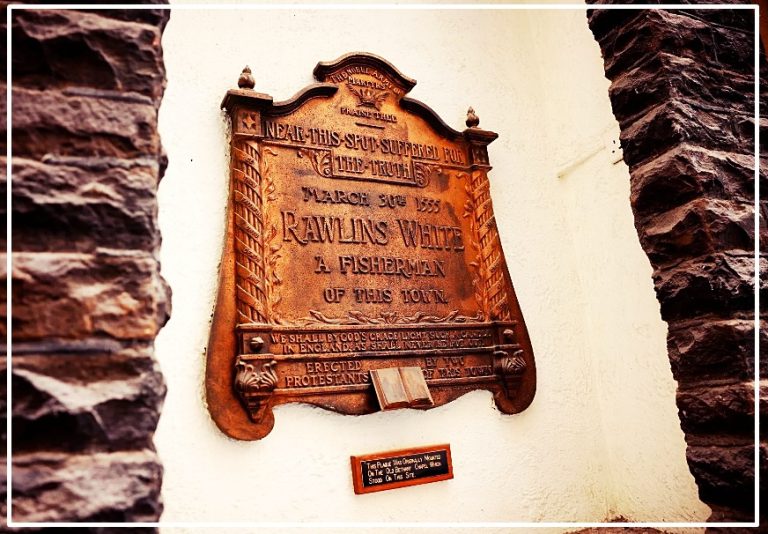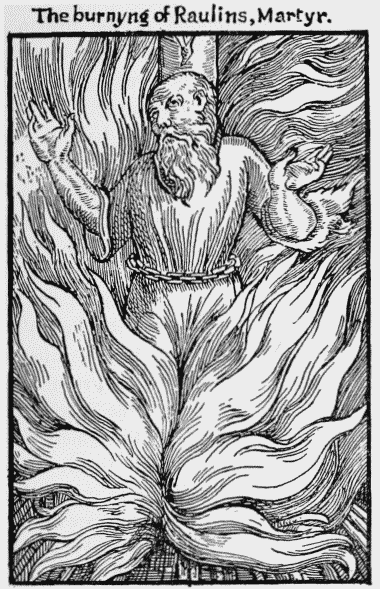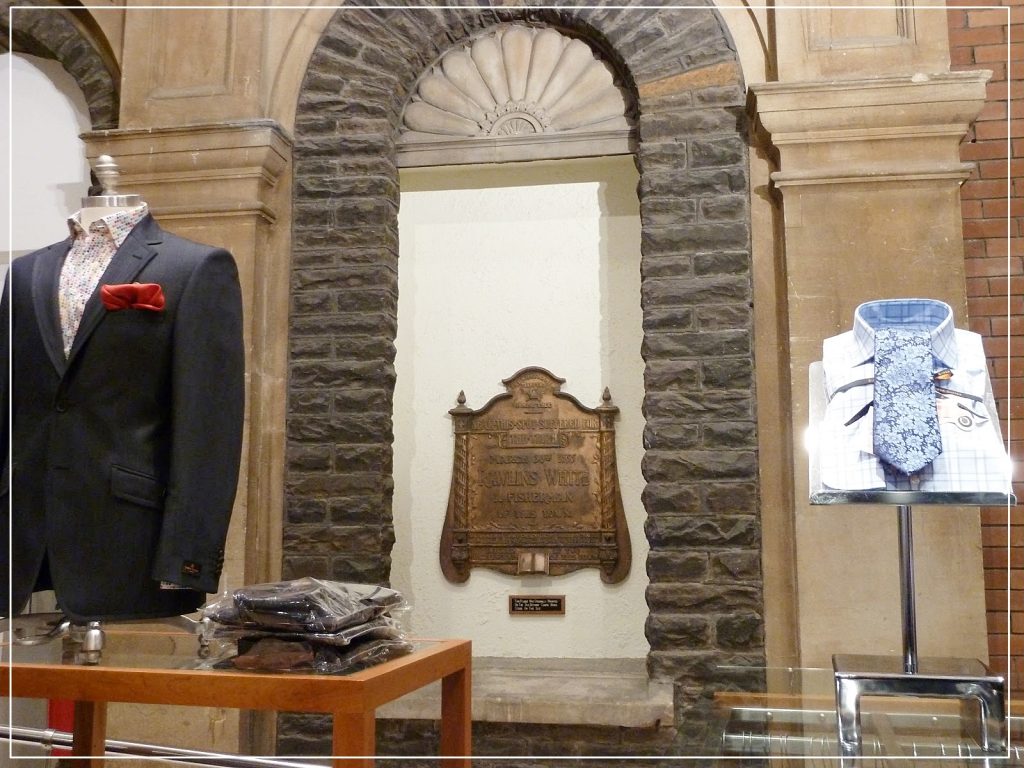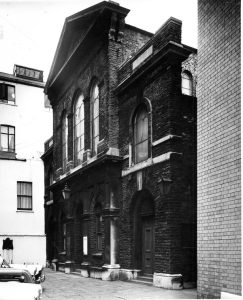Rawlins White
Click on the arrow below for a video on Rawlins White's life and death
By the year of 1555, Rawlins White had been a fisherman in the town of Cardiff for more than twenty years. He lived in the part of the city between the River Taff and Westgate Street, near where the Millennium Stadium now stands. White had probably been converted as a result of hearing the preaching of itinerant reformers during Henry VIII’s reign, though it is possible that he inherited his ideas from the group of early Protestants in Cardiff who had been associated with Thomas Capper. Foxe described him as ‘a good man … altogether unlearned and very simple’, but also as ‘a great searcher-out of truth’. He sent his son to school that he might learn to read sufficiently to be able to read the scriptures to him – probably Wycliffe’s early English translation. He was well-known and well liked in the town, and ‘a notable and open professor of the truth’.
During the reign of Queen Mary I (Bloody Mary), the monarch was attempting to return the country to the Roman Catholic faith and church authorities were anxious to be seen to follow orders. This made Rawlins White and his Protestant group vulnerable. He had drawn together a small group of fellow believers who sought together to worship God simply and sincerely in their homes. It was probably one of the first examples of a genuine ‘gathered’ church in Wales. Though he and others began to meet in secret to worship God and encourage one another rather than openly, they were either found out or betrayed. White was seized by local officers on suspicion of teaching heresy, and brought before the Bishop of Llandaff who ordered him to be imprisoned in Chepstow.
Later he was brought back to Cardiff and imprisoned in the castle – possibly so that the ecclesiastical authorities could access him more easily in order to try to persuade him to recant from the Protestant views to which he was totally committed. He languished there and in the Cockmarel Tower for over a year, resisting all the Bishop’s attempts to change his mind regarding his faith. After several failed attempts to force White to recant his beliefs, the Bishop condemned White as a heretic and he was sentenced to death by burning.
When the day of his execution arrived, 30th March 1555, armed soldiers came to take White to the place of execution. Seeing them, he was shocked and said:”Alas! What meaneth this? Soldiers are not needed. By God’s grace I will not run away. With all my heart I give Him thanks that I am considered worthy to bear all this for His name’s sake.” He was taken from Cockmarel to be burned at the stake a short distance away. On his way Rawlins White saw his wife and children waiting for him, weeping. The sight of his family was more than he could bear, and he himself wept to see them there. Recovering, he struck his breast with his hand, saying, “Ah, flesh, movest thou me so! Wouldst thou prevail? Well, I tell thee, do what thou canst, thou shalt not have the victory!”
Arriving at the execution place, Rawlins White fell to his knees on the ground and kissed it; and when he arose, there was dirt on his face. He was heard to say “Earth unto earth, and dust unto dust; thou art my mother, and unto thee I shall return”. White stood with his back against the stake, while a blacksmith put a chain around him and made it fast. White said to him, “I pray you, good friend, nail the chain fast; for it may be that the flesh will strive mightily, but may God in His great mercy give me strength and patience to bear the fire.”
White saw a friend of his who was there called John Dane, who subsequently recorded the events of the day. White said to him: “I feel a great fighting between the flesh and the spirit and the flesh would very fain have his way; therefore I pray you, if you see me tempted to save myself from the fire, hold your finger up to me, and I trust I shall remember myself.” The wood and hay were placed around him. White himself reached out to help them arrange the materials for the fire to try to ensure the flames would be more effective and quick. He seemed to the crowd to be very calm and relaxed. Then a priest began to speak the words of the liturgy, and White called out to the people not to listen to them – at which voices were raised against him from the the large crowd, and there was shouting for the flames to be lit.
At the time of his death, Rawlins White was reported by his loyal friend John Dane to have been about 60 years of age. What subsequently became of his family or the others who associated with him in their simple pursuance of the Christian faith is not known.
The memorial plaque (see top photo) in the House of Fraser department store is on St Mary’s Street in Cardiff, and is in honour of Rawlins White. It was erected and unveiled on 3rd April 1907 by local Protestants, and was originally on the wall of Bethany Chapel, which stood on the approximate site where Rawlins White was burnt to death. In the late 1960’s, Howells Department Store bought the chapel and expanded their premises, incorporating the chapel into their building, retaining the plaque and features – the plaque is on the ground floor Menswear Department.
Update: In 2024 the area is being re-developed and will become a place of cafes and restaurants – the House of Frazer store has closed and been partly demolished, opening up what remains of the old Bethany Chapel. It is hoped that the Rawlins White plaque will remain where it has been since it was unveiled in 1907. Details here







